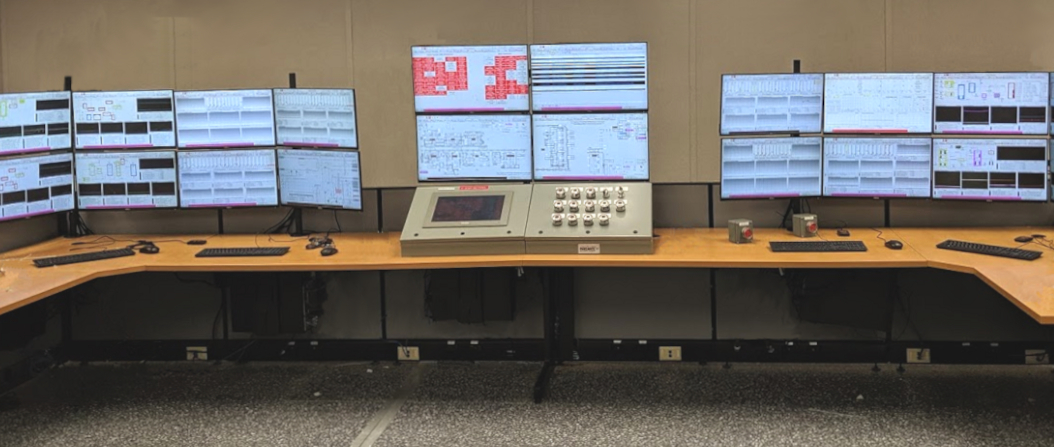When you are (eventually) back in your office, you want an environment that is going to be comfortable and functional. You need to be able to do your job effectively while not going home with an aching back at the end of the day. This should be no different for the people who are going to be operating your manufacturing plants. Designing a fully functioning control room that keeps the staff happy can be a difficult job. The following are some thoughts and recommendations when designing your facility’s control room.

Consider ergonomics when selecting furniture
Operators or technicians will be sitting at their console for a large portion of the day. If you were going to be sitting at a table for 8-12 hours, five days a week, would you want it to be a folding table with an upside-down bucket for a seat (I am speaking from experience here)? Making sure the console desk is at a reasonable height and the chairs are rated for the expected usage. Providing employees with ergonomic furniture will help keep them focused. There are a number of companies that produce well designed control room furniture who will be more than willing to work to meet your requirements.
Annunciation is important, but don’t make it distracting
Overhead annunciators for alarms and warnings are important to have. Employees will need to be notified when something happens in the plant if they are not at their desk. However, you do not want the annunciator to be so loud and annoying that the operators cannot think while its going off. Consider an annunciator with an adjustable volume and a selectable tone to meet the needs of your control room.
Provide operations with the correct number of monitors to do their job effectively
If your operators are expected to run a large chemical plant, there is a very small chance a single monitor will be sufficient. At the same time, giving operators too many screens can cause information to get lost as they are overwhelmed with data. A lot of times, operators tend to have some HMI graphics they leave up all the time (such as trends or critical process information) and then dedicated screens to control the plant. A well designed control room will allow operators to keep the most important information on display, while still performing required process control.
Video walls can provide good communal information to the entire staff
Keeping your plant running optimally should be your main goal. Having overall plant summary displays to show information such as alarms, key performance indicators, and shutdown status summaries on a larger scale will allow engineers and managers to get the information they need without interrupting or getting in the way of the operators. Video walls also make great show pieces if you offer public or private tours of your plant.
Protect your assets
The computer technology that is used to run your plant is an investment worth protecting. The operator workstation hardware, be it thin or thick clients should not be sitting on the ground under the desk where it can be kicked or knocked over. Keep the computers in a separate location (such as a server rack), or at the very minimum keep them on platforms attached to the bottom of the furniture. A lot of control room furniture comes with built-in cabinets with power distribution that the computers can be kept in. Also, keep any engineering level equipment (such as the engineering workstations, network hardware, or anything safety related) behind a lockable door to limit access from unauthorized visitors.
Give the employees enough room to stretch out
No one wants to be cramped in a closet for 12 hours a day. Make sure your operations staff have enough space in the control room to at least get up and take a few steps to stretch out. Even having a coffee pot or a water fountain to allow people to get up and get a stretch will help them stay attentive when at the console.
These are just a few of the things you need to think about when building your control room. There are many design and layout options to consider. Starting with a user requirements specification that consolidates the needs and wants of operations and other stake holders is good way to begin. A well-designed control room will keep your staff attentive and happy, thus improving morale and productivity.

